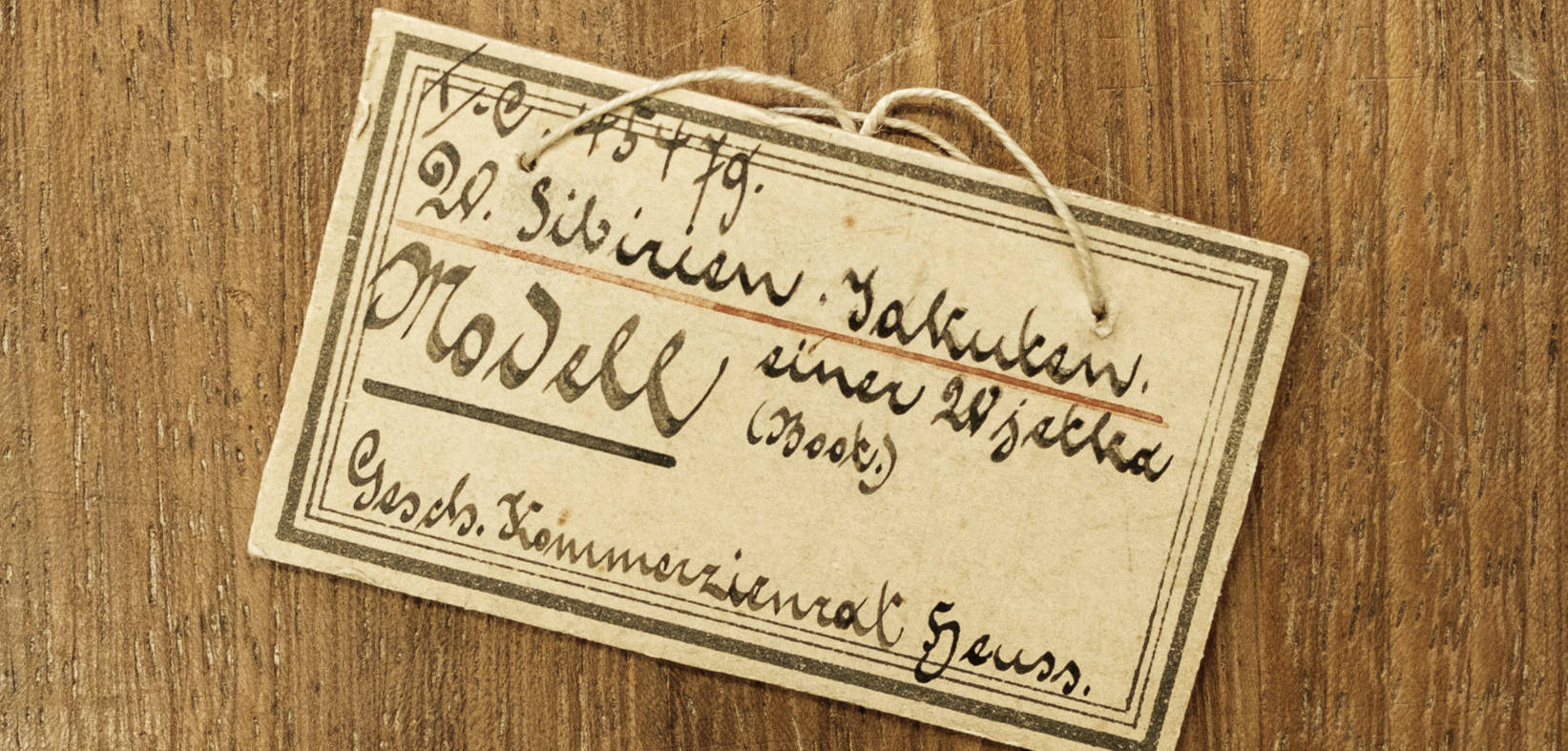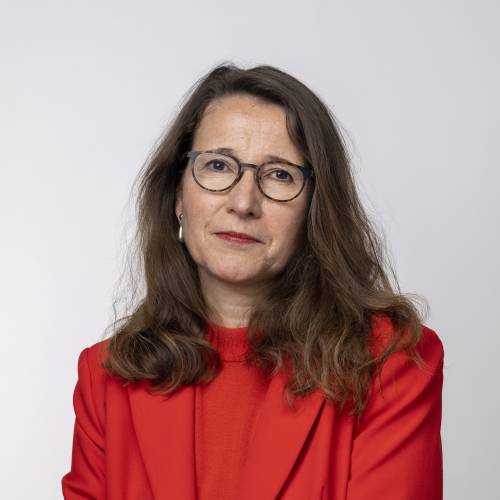Startseite > Collections > History of the collection


Founded by the Württemberg Society for Commercial Geography, the Commercial Geographical Museum, the forerunner of today’s Linden Museum, initially focused on samples of goods and products from German colonies and pursued economic goals. It was not until the 1890s that the focus shifted to anthropological collecting. Today, few of the original trade objects remain, and their whereabouts are unknown.
In the years that followed, the focus was on everyday objects, utilitarian items, and art. The regional focus was on the former German colonies. The core collections included the continents of Africa, the Americas, and Oceania. Objects from Africa constitute the largest collection and still comprise some 40,000 objects today. Within the African collection, Cameroon has the largest number of objects. Along with the object collection, a map collection and a very extensive photographic collection were also established.
By 1910, the museum had more than 60,000 objects in its collection. The chairman of the association, Karl Graf von Linden, was largely responsible for this. He cleverly built a vast network of contacts around the world, attracting potential collectors and winning them over to the museum. Due to his former position at the royal court of Württemberg, he was able to offer a royal Württemberg order for significant object donations, which was widely known. The majority of the museum’s objects were donated at this time.
Later, significant acquisitions, such as those from the Stuttgart State Trade Museum, the Royal Natural History Cabinet in Stuttgart, collections from the Crown Estate, or the purchase of the object and photographic collection from the Colonial Museum in Berlin, expanded the object holdings. In 1962, the Stuttgart Badakhshan Expedition was the museum’s first own expedition.
An important turning point in the history of the collection was the nationalization of the museum in 1973. Especially after the Second World War there was a lively trade in objects, preferably with ethnographic dealers. For this reason, former objects from the Linden-Museum still appear on the art market today. Nationalization put an end to this system. At the same time, it made it possible for new acquisitions to be financed from the resources of the Central Fund of Baden-Württemberg and the Museum Foundation since 1974.
In the early 1970s, work began on building up the collection areas of the Orient, South and East Asia. Until the 1990s, acquisitions came mainly from art dealers.
Since 1884, the Linden-Museum has been preserving and acquiring everyday objects, ritual objects and works of art. From this historical perspective, the collections focus on non-European contexts. Today, the collection is increasingly being expanded in partnership with stakeholders from the societies of origin of the objects and the Stuttgart. New forms of acquisition include joint research and decisions on additions to the collection.
The objects acquired are formally and aesthetically significant and important for cultural identity; they show a continuation of traditions or modern artistic confrontations and can be assigned to specific focal points of the respective collections. The state of conservation of the objects must be taken into account. The scholarly documentation of the acquisition contexts must be considered. If possible, objects, recordings, photographs, films, documents, or books that shed light on the context of the acquired objects should also be collected.
In the case of acquisitions as well as donations and gifts, the provenance of the objects must be taken into account. Only objects that have been UNESCO Convention of 1972 and the ICOM guidelines are classified as ethically unobjectionable can be included in the collections. Donations must be accompanied by a transfer form with biographical information about the object.
All acquisitions will be added to our Collection online in a timely manner with their respective contexts and presented transparently to the public. The Linden-Museum is aware of its great responsibility towards its collections. It preserves them on behalf of the State of Baden-Württemberg and the City of Stuttgart.
Provenance research is the study of the history of objects in a collection from their origins to the present. A biographical approach is used to examine their provenance and their path to today’s collections, e.g. on the basis of previous owner and previous owner relationships, previous collection affiliations and the wider historical context. The circumstances of acquisition also play a role, both in the country of origin and at the time of entry into the museum.
Colonialism describes a system of foreign rule associated with European expansion in the 15th century with unequal power relations, in which the appropriation of objects may have taken place by force, but this was not always the case. For an assessment in the context of provenance research, it is therefore important to explore the complex historical (colonial) context. The source for this is not only archival documents, but also the knowledge of people from the societies of origin. In many cases, the results must be regarded as preliminary and not complete, since new sources can always emerge.
The terms “origin” and “provenance” therefore have a local and temporal as well as a cultural reference. This approach offers the opportunity to examine global cultural processes in the past and their continued impact in the present on the basis of the biographies of objects and people. In ethnological museums, provenance research is a fundamental part of the museum’s work and is carried out not only by the Provenance Research Department, but also by the regional departments. It is the study of the relationship between the museum’s own collection and colonial history.
In this way, ethnological museums can make an important contribution to the public discussion of German colonial history. Due to the persistence of economic, social and political inequalities that arose in colonial times and the ongoing circulation of objects acquired in colonial situations (e.g. on the art market), their reappraisal remains highly relevant today. To do justice to this, a permanent position for provenance research has been available at the Linden Museum since 2021.
Provenance Research from the Nazi Era (2016 – 2017)
The project was funded by the German Lost Art Foundation, the state of Baden-Württemberg and the city of Stuttgart.
More information in German here.
Difficult Heritage (2016 – 2018)
A research project on the museological and scientific handling of colonial-era objects in ethnological museums. A collaboration between the Linden-Museum Stuttgart and the University of Tübingen.
More information here.
LindenLAB – Participation, Provenance, Presentation (2018 – 2022)
The project was funded as part of the Initiative for Ethnological Collections of the German Federal Cultural Foundation.
More information here.
With Namibia: Engaging the Past, Sharing the Future (2019 – 2022)
A project within the “Namibia Initiative” of the state of Baden-Württemberg, funded by the Ministry of Science, Research and the Arts Baden-Württemberg.
More information here.

Phone +49.711.2022-422
Mail: himmelsbach@lindenmuseum.de
The Linden-Museum Stuttgart was founded in the colonial era and has historically contributed to the establishment of a cultural hierarchy between Europe and the “rest of the world”. We actively and self-critically confront our past and take our responsibility for the museum’s collections very seriously.
We are open to requests for restitution from relatives and representatives of the societies of origin. We share knowledge about the collections and their acquisition contexts transparently with the descendants of the societies of origin and with our visitors. We are one of the few anthropological museums in Germany to have created a permanent position for provenance research.
In dealing with colonial collections, human remains, and cultural artifacts, we follow the guidelines of the German Museum Association.
Restitution claims are examined carefully and promptly together with the claimants. In general, we are in favor of restitution as part of a respectful cooperation. The majority of the Linden Museum’s collections are owned by the State of Baden-Württemberg and the City of Stuttgart. The museum is an important point of contact for the Ministry of Science, Research and the Arts of the State of Baden-Württemberg, which ultimately decides on restitution together with the City of Stuttgart.

Tel. +49 711 2022 400
Mail: decastro@lindenmuseum.de
Dienstag bis Samstag, 10 – 17 Uhr
Sonn- und Feiertage, 10 – 18 Uhr